Green Building Techniques
Thankfully, building green has cast off its hippy image, helped by spiralling energy costs and increased eco-awareness. As so many homes now come with an energy rating, building green is not only planet friendly but also a major marketing tool should you ever sell.
There are now numerous natural avenues to wander down if you’re building from scratch or renovating. In fact, one of the hardest things about building an eco home is deciding exactly what ecological factors are most important to you. Do you want low energy bills, to create a natural environment or just want a smaller carbon footprint? And just what is the most ecological and environmentally friendly way of building?
This is where it gets impossible to quantify, and it’s often simpler to strive to keep the embodied energy of your home, its energy use and environmental impact as low as possible.
Some of the most well-insulated building techniques – structural insulated panels, insulated concrete formwork, etc – score highly on low energy use and high insulation, but use manmade materials, with a high embodied energy. This feature will talk you through a range of natural building techniques and materials.
Planning your house
The most important consideration when planning your green build is design, and using your plot to make maximum use of natural resources. Positioning and layout are crucial: for example, to make the best use of the heat from the sun, make sure your house sits on a north/south axis for maximum solar gain, which could cut around five per cent from your heating bills. Existing trees, hedges and hills on site can be used as protection from wind and rain so your house won’t have to work as hard to keep the cold out. Once you are ready to draw up plans, make sure it’s done with the help of an experienced green architect or consultant who can advise you how to build an airtight, thermally efficient building, on the best possible orientation.
Techniques and materials
Man-made building materials such as bricks and concrete have a high embodied energy: that is, use a great deal of energy in production, and even more once transport to site is taken into account. If used in abundance, they will give your house a large carbon footprint before it’s even built. By using local natural materials, you’ll not only have a low carbon footprint but a healthy living environment, too. There is a huge variety of materials and methods to choose from, depending on the final look you are trying to achieve, the amount of work you want to do yourself and what materials you can find locally or from a reputable source.
Timber
Wood is a self-builders’ wonder-product: not only does it have a multitude of uses, it is also great for the environment, being renewable, organic and non-toxic. What’s more, almost all wood used by British companies is sourced from well-managed forests that plant new trees as they fell. Typically, wooden houses contain 12 to 20 m3 of timber, which will have absorbed around 14 tonnes of CO2 in its lifetime. Timber frame is the most common method used in self-builds in the UK, providing highly adaptable, accessible and flexible homes, thanks to their non-structural internal walls.
There are two main systems: traditional post and beam or more modern stud framing, with the majority of frames factory made, meaning minimal waste is produced. The method is popular and there are hundreds of specialist firms, so you’ll have no problem finding a good company to fit your design ideas and budget. For extra help and to make sure you are using a certified company, contact the UK Timber Frame Association or TRADA.
Cob
There are many methods of earth-based construction of which cob – a blend of earth, clay, straw and water – is the most popular in the UK. As well as being simple, it’s durable too: the oldest standing cob building in the UK was built in the 1200s. The technique involves building up thick walls by working in layers, letting each one harden before adding the next. The wall is then plastered with clay or lime, or can be left unfinished.
Cob is simple, cheap and requires few tools other than your bare hands, and dries almost as hard as concrete so is perfect for structural walls. It can be time-consuming, but has many advantages including durability, fire-resistance, high insulation levels and malleability. In most cases, building works are surprisingly cheap, depending on site accessibility and how much adjustment is required to the onsite sub-soil. Cob building specialist Kevin McCabe says the usual cost, including labour and materials, will be no more than £200 per m3 – or £15,000 – £20,000 for a typical three-bedroom house.
To learn more about cob building, visit the Centre for Alternative technology or the Weald and Downland Open Air Museum, which both run courses, or contact specialists such as Cob in Cornwall or Kevin McCabe.
Straw bale
People been building homes using straw for centuries, thanks to its low cost and ready availability. There are two mains ways to build: using the bales to build load-bearing walls or as a highly insulating infill. When used to bear load, the bales are placed on top of each other in a stretcher or running bond with long wooden pegs driven through to connect layers. When used as insulation, the bales infill the walls of a timber frame structure. In both cases, walls are rendered with lime, as it’s flexible enough to cope with minor movement in the bales, and lets vapour pass through.
Properly built, straw bale houses are fire-resistant, waterproof and super-insulated. A modern version of this old technique is Modcell prefabricated structural panels, comprising a timber frame filled with straw bales, compacted, reinforced and protected with a render coat or timber fascia. They are made in ‘flying factories’ – the company works with local farmers to identify a nearby source of straw to reduce transport emissions. Panel sizes vary to suit project requirements, and as you can imagine are extremely heavy – up to 1.4 tonnes each – so you’ll need to get professional help from the Modcell team for construction.
Roofing
Using natural materials can give you a visually stunning, highly insulated and energy efficient roof. Choosing from the below – with low embodied energy, and minimal processing – would be the icing on your eco-cake.
Thatch
Thatch – Britain’s predominant form of roofing until for hundreds of years – is a simple covering of natural, renewable and recyclable reed or straw. The material is often local, and is highly insulating. To thatch a roof, bundles of thatch are laid down and secured to roof beams before being pegged in place with wooden rods. Successive layers are added, from the bottom upwards, with a final layer used to reinforce the ridgeline.
Thatch is light, so needs only a simple support structure, and is flexible so can be used for any roof shape. However, it is labour-intensive and a certain level of skill is required, so you would need training before constructing one yourself. The lifespan of thatch is around 30 to 50 years, although this varies widely depending on the pitch of the roof, the local climate conditions and the quality of the materials.
Wooden tiles
There are two basic types of wooden tiles for roofing: shingles and shakes. Shakes are fairly thick and look rustic as they are split, and shingles are thinner and smoother as they are sawn. Made from strong heartwood, both products are available in a variety of sizes and lengths. To build the roof, tiles are laid in rows from the bottom up, with each row overlapping the previous one and a cap placed at the roof ridge. Typically tiles are nailed on to wood strips spaced a few inches apart between beams, to allow air to circulate and prevent decay.
Make sure your tiles are sustainably sourced. Companies such as Rawnsley Woodland Products specialise in this, but if in doubt contact the FSC for help.
Green roofs
Green roofs – vegetated roofs, or roofs with vegetated spaces – are loved by the eco-building community, adding thermal mass and insulating against noise, with the soil blocking low-frequencies and plants higher-frequencies.
Contrary to popular belief, green roofs can be done yourself. A good green roof can be fitted on to most small-scale buildings with relatively flat or curved roofs, whether it be a garage or a small extension, as long as the roof is strong and leak-proof. Start by installing a ventilation layer over the main roof structure to building regulations requirements, then construct a strand board base layer. Once this is done, create a waterproof layer using a strong membrane. You can then add soil and start planting. Using relatively cheap local materials and few ‘engineered’ items will keep the roof as sustainable as possible and allow for a greater range of plants.
Green roofs are possible on pitched roofs, but will need more specialised skills. If in doubt, experts Dusty Gedge and John Little have written an e-guide which is perfect for novices. Read all about it at http://livingroofs.org/DIY_Guide_intro.html
Renovating
If you aren’t building from scratch but still want to green up, there’s no reason why you can’t renovate and retrofit for a more sustainable home. There are hundreds of things you can do and measures you can implement; a few simple steps will ensure your home is a green as possible.
Insulate
Insulating your home is the single most important thing to do for a more sustainable home. The Energy Savings Trust (EST) advises you start by insulating your loft, which when left unlagged is responsible for 25 per cent of a home’s heat loss. By adding a layer of insulation, to at least 270mm thick, you could slash annual heating bills by over £150. If your house was built after the 1920s there’s a good chance that you have cavity walls, which are easy to insulate, can reduce heat lost by 60 per cent and will only take a few hours to do. It should cost around £500, and as you’ll benefit from savings of over £100 per year it will pay for itself in around five years.
Solid walls are more problematic – they lose more heat than cavity walls, and are more difficult to insulate. It is possible, however, either internally or externally. A 50–100mm insulation treatment on the outside walls of a three bed semi will cost over £4,000, so it’s more cost-effective to do while carrying out other external repair work. Insulating from inside – by applying either insulation/plaster board laminates or wooden battens filled with insulation or flexible linings – is much cheaper, at around £40 per m2, but be aware the thickness of the insulation may mean alterations to window and door frames.
Double glazing
Anyone who has experienced a single-glazed house in the depths of winter will be only too aware of how draughty they are. Double-glazing, which creates an insulating barrier of air or gas between layers of glass, will reduce heat loss in an uninsulated home by 20 per cent. By fitting good quality double glazing, you could save around £110 and 720kg of CO2 a year, as well as reducing noise from outside and problematic condensation from the inside. If you can’t afford to replace all your home’s glazing at once, you could fit double glazing in the rooms you heat the most first, such as your living room and main bedrooms.
Reduce mains water use
Mains water used in the home has been expensively treated to make it high enough quality for drinking, so it’s scandalous that so much goes to waste down the drain.
When buying new taps, ensure they come with aerators fitted (your local plumber will be able to help) and change over on to a water meter, which will both help you conserve water and reduce your bill. Also, think about installing measures to collect rainwater and use this in the home for things such as the washing machine and flushing the toilet. A relatively cheap and simple water butt system coupled with some clever plumbing could halve your household mains water usage.
Solar power
When your house is as thermally efficient as possible, you can start thinking about creating your own energy – most popularly through solar power. Installing solar thermal panels on your roof will capture the heat and use it to heat water, which is then stored in the hot water tank to be drawn on when needed. There are two types of solar panel: flat panel systems and evacuated tube systems, with the latter tending to be slightly more expensive. A flat panel system typically costs around £3,000 to £5,000 and will provide up to a third of your annual hot water needs, which could save you £50 a year.
You can also use solar power to cover some of your electricity needs by installing a photovoltaic system. These tend to be more expensive than hot water panels, ranging between £8,000 to £20,000, but can save you up to £230 on your annual electricity bill. Before installing either, check the compatibility with your heating system and that you have enough south-facing roof space – research really pays off here.

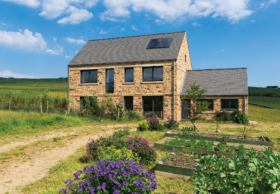


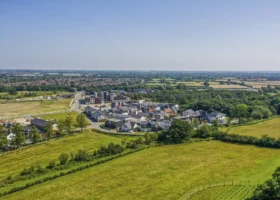



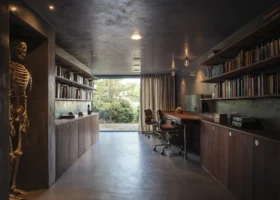
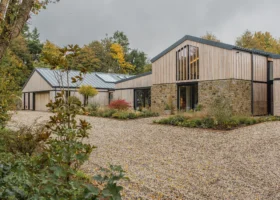
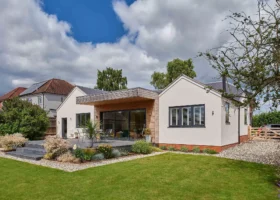























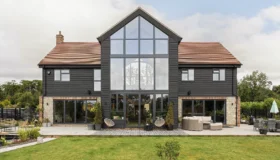



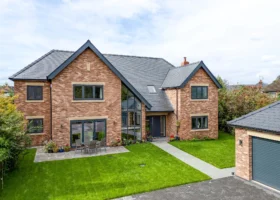

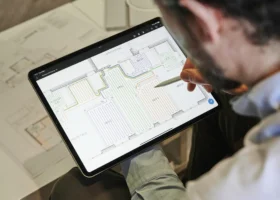
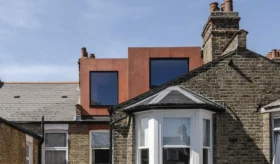


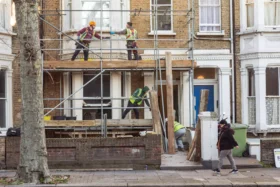


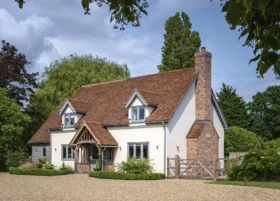


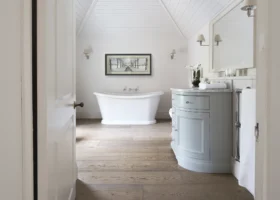





























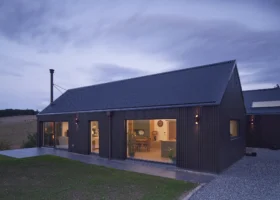















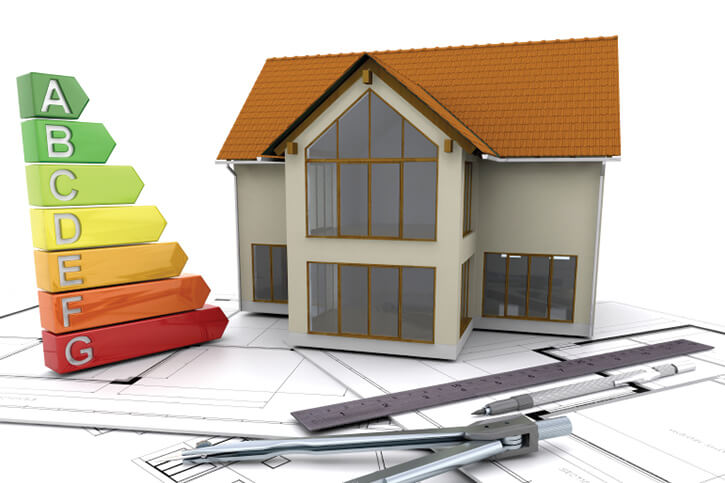
 Login/register to save Article for later
Login/register to save Article for later

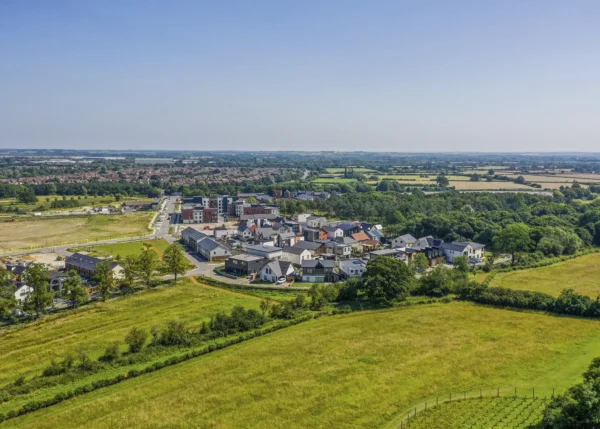


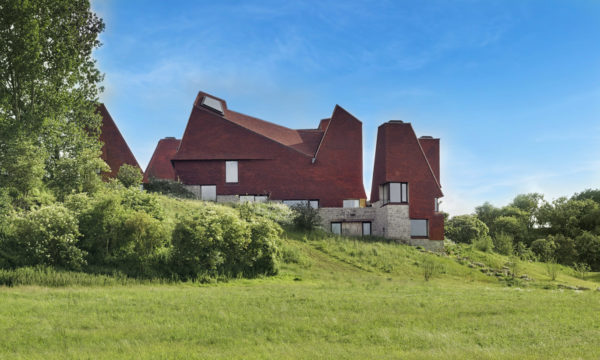








Comments are closed.